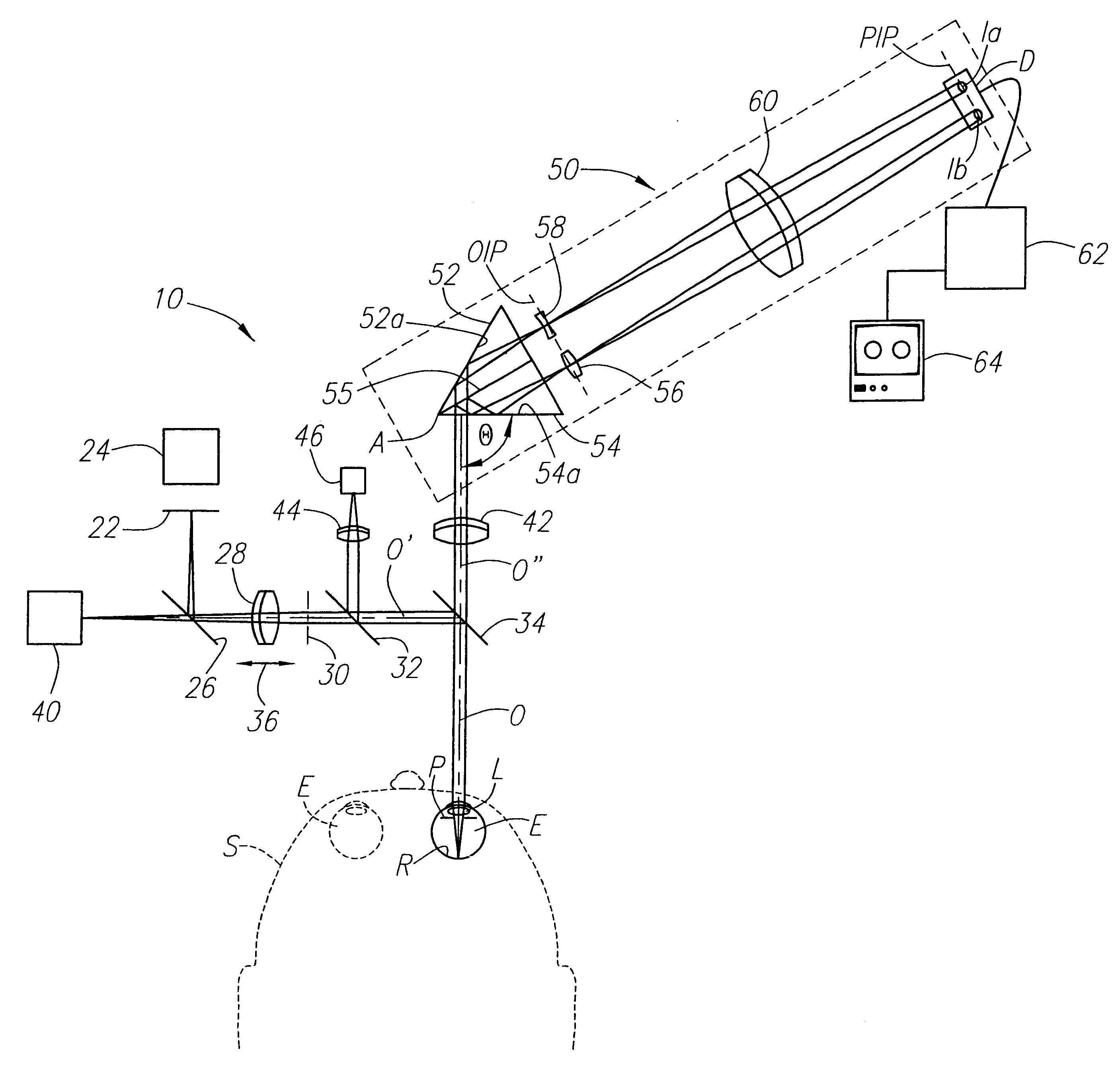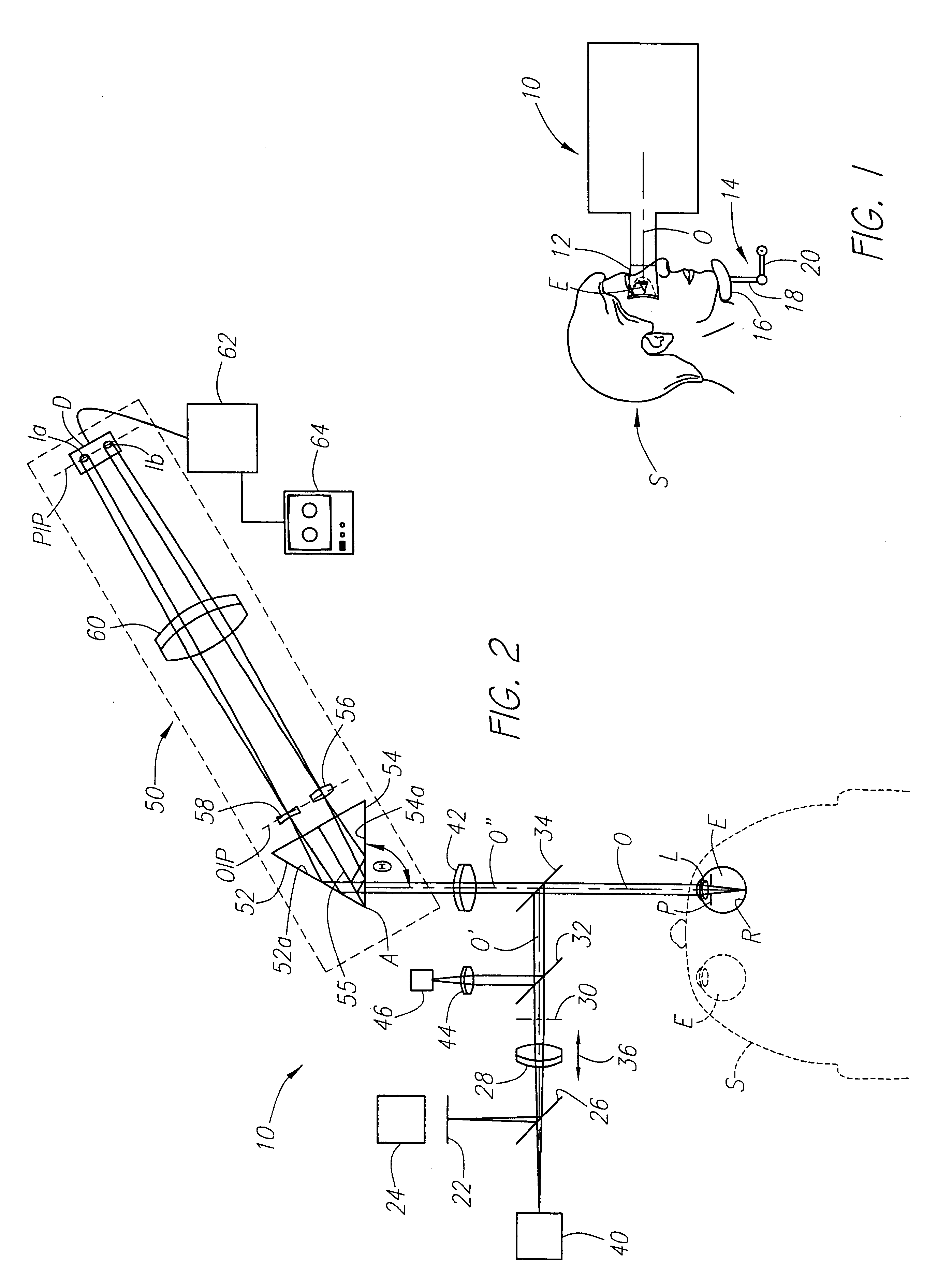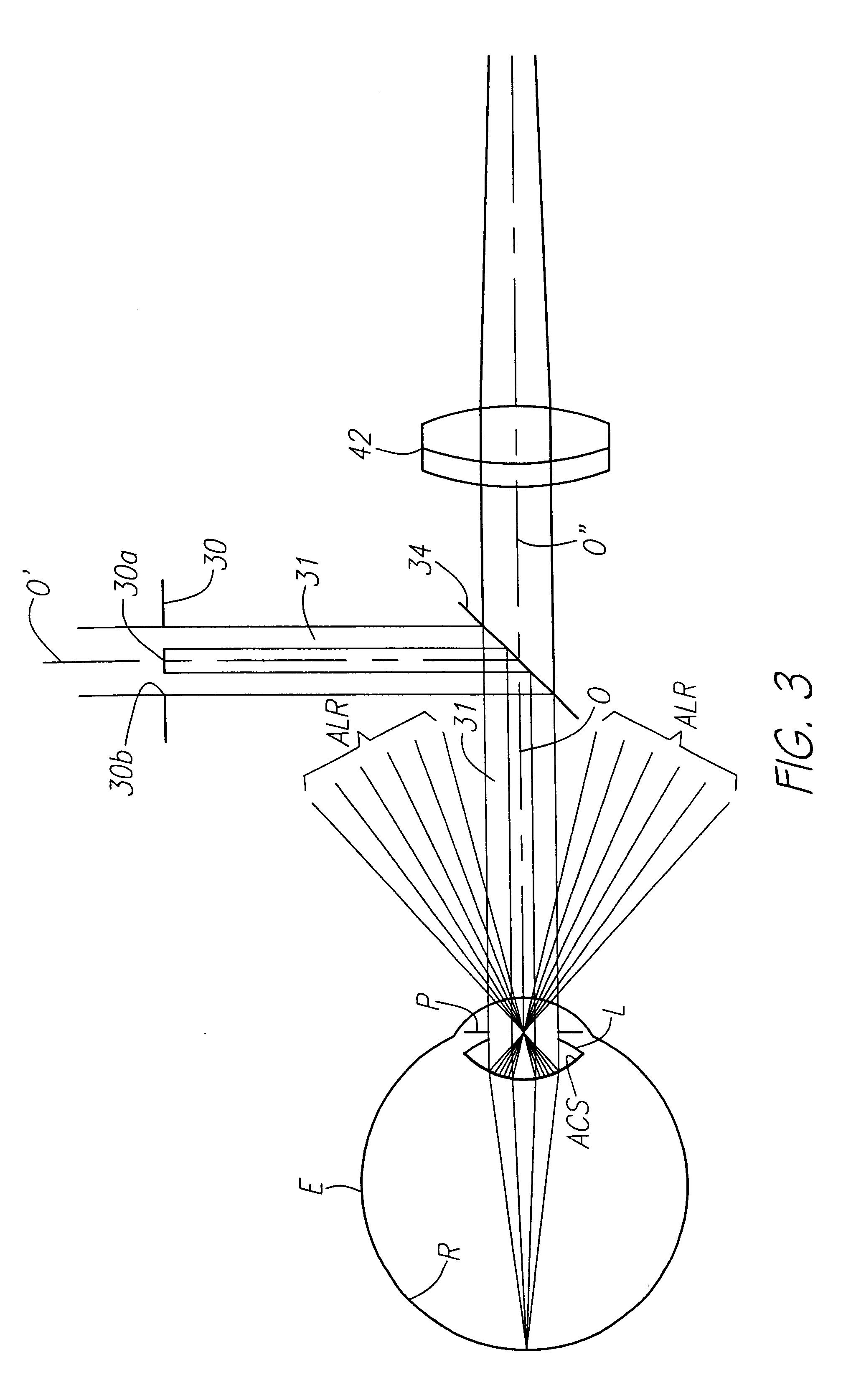Method and apparatus for measuring optical aberrations of the human eye
a technology of optical aberration and human eye, applied in the field of human eye optical aberration measurement method and apparatus, can solve the problems of less than optimal images generated, complex systems, and high cost of optical potential maximization of visual systems
- Summary
- Abstract
- Description
- Claims
- Application Information
AI Technical Summary
Benefits of technology
Problems solved by technology
Method used
Image
Examples
Embodiment Construction
Referring now to FIGS. 1 and 2, the subject person S that is to have his or her eyes analyzed by the optical apparatus, generally designated 10, of the present invention positions one eye against a flexible eye cup 12 for aligning the center of the pupil of that eye with the optical axis O of the apparatus 10. Preferably, the head of the subject person S is adjusted to obtain that alignment and then supported in that position by any convenient means, such as an adjustable chin support 14. For example, a shaped pad 16 may be supported by a pair of pivotally connected links 18 and 20 that can be manipulated and then locked in position when the subject person S has his or her eye E in appropriate alignment with the optical axis O, which alignment can be determined by the operator of the apparatus in a manner described below. For clarity of illustration, the eye cup 12 is omitted from the schematic plan view FIG. 2.
Referring more particularly to FIG. 2, the optical apparatus 10 is provi...
PUM
 Login to View More
Login to View More Abstract
Description
Claims
Application Information
 Login to View More
Login to View More - R&D
- Intellectual Property
- Life Sciences
- Materials
- Tech Scout
- Unparalleled Data Quality
- Higher Quality Content
- 60% Fewer Hallucinations
Browse by: Latest US Patents, China's latest patents, Technical Efficacy Thesaurus, Application Domain, Technology Topic, Popular Technical Reports.
© 2025 PatSnap. All rights reserved.Legal|Privacy policy|Modern Slavery Act Transparency Statement|Sitemap|About US| Contact US: help@patsnap.com



